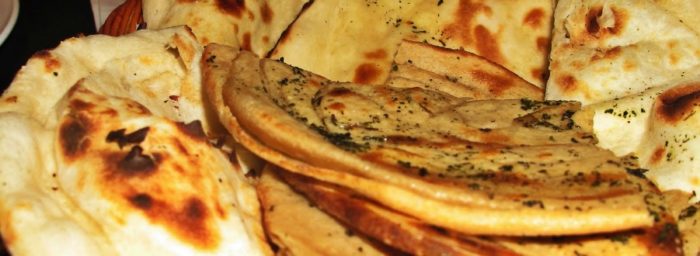
Different types of Indian breads explained
If you’re looking to broaden your culinary horizons, delving deep into the world of Indian breads is a great way to start. A great deal of Indian breads come in flatbread form, with pan-fried cooking the preferred method. In many places throughout India, bread is consumed as a staple food, with the north of the subcontinent particularly partial.
Flour varieties for bread recipes
Before we start exploring the various types of Indian breads you need to try, it’s worth taking note of the various flours that are used in their recipes. Although a broad raft of flours is used, the majority of bread recipes call for rice, chick pea, corn, lentil and wheat flour.
Lentils Flour
This is an ideal ingredient for those seeking a gluten-free option, with lentil flours also offering a high source of natural protein. Gram is one such flour, with chickpea as the central ingredient. Urad dhal is another popular option of lentil flour and is commonly used for whipping up poppodums and the like.
Wheat Flour
You’ve plenty of choices when it comes to wheat flour with Indian breads. There’s Atta, a whole wheat variety that’s used in all manner of Indian flatbreads like naan, roti and chapati. Then there’s Maida, a finely milled wheat flour that used more commonly in bakery recipes, with plenty of pastries using this as their base. Rounding off the key wheat flour varietie sis Shooji, more commonly known as semolina.
Rice Flour & Corn Flour
Made from either brown or white rice, rice flour is a recipe staple of many breads you’ll find in the south of India. Corn flour is also widespread in usage, particularly in northern India and the Punjab.
Most Popular Indian Bread Varieties
Now we’ve firmed up on the flour basics, we can delve a little deeper into the delicious world of Indian breads and the most popular varieties enjoyed by diners today.
Chapati
Chaptai is one of the most common of all Indian breads and should be fairly familiar to international diners. It’s a staple of North Indian cooking, with this favourite flatbread made to a simple recipe with Atta flour and cooked atop a flat skillet. The name “chapati” comes from the Hindi for “to slap”, a reference to the preparation method for forming the bread dough into thins before they are smothered in ghee and cooked. It’s a common accompaniment to meals, with the bread proving easy to tear, making it ideal for gathering up individual ingredients.
Paratha
Another popular flatbread originating from the northern region of India, paratha remains a staple food of the region to this very day and is particularly savoured as a snack or breakfast time. It’s name refers to the layers of cooked dough that make up the final form of the bread, with paratha proving a more substantial alternative to the likes of chapatis thanks to more folding during the preparation stage and more generous layers of ghee and/or oil before cooking.
Puri
Puri is another breakfast staple and a commonly consumed snack. This deep-fried bread can be typically seen accompanying a bhaji or served alongside a curry, while the preparation itself can involve several varieties of wheat flour. The bread dough is rolled out into small circles before being deep-fried in ghee or oil, with the bread taking on its signature puffy shape during the frying stage.
Naan
We couldn’t have neglected to include naan on this list. This oven-baked bread is consumed the world over and is made with much the same method as traditional pita bread. Although the preparation of the dough is similar to that of roti, naan bread is cooked in a tandoor oven. To enjoy it at its best, naan should be eaten hot of the oven and brushed with a little butter or ghee. It’s often served as an accompaniment to larger meals, either as a side to pick up ingredients or as a more substantial foodstuff in its own right with generous fillings.
Papadum
This thin and crispy circular brad is usually made with a seasoned dough, with black gram flour the preferred base. Once the dough is formed and rolled, it’s cooked on a dry heat source or fried until the signature crispy disc of a papadum is realized. Other types of flours can be used to make this popular accompaniment, with rice, lentil and chickpea based flours all common.
If that’s not enough to whet your appetite, there are brilliant Baatis from Rajasthan, magnificent Makki di roti from the Punjab, not to mention Czot, a Kashmir speciality, to savour. Whether you’re looking to broaden your culinary experiences with new tastes and flavours, or simply need some inspiration for some spectacular sides for your next curry night, Indian breads are the perfect place to start.
